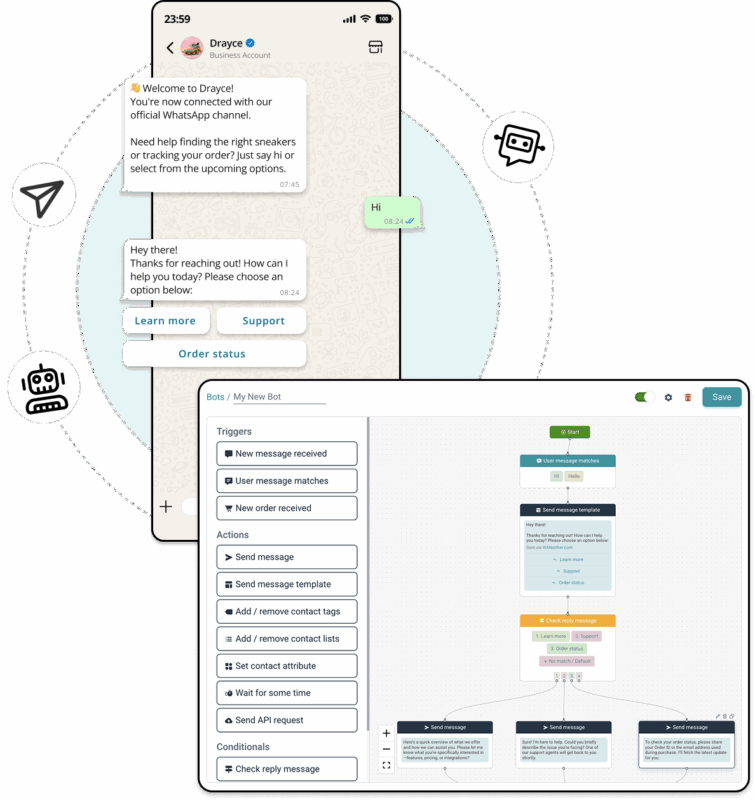Trusted by 5,000+ brands and growing businesses like yours

What is a WhatsApp Chatbot?
A WhatsApp chatbot is an automated assistant that answers user questions, collects their details, and helps them complete key actions on WhatsApp without any human intervention. For businesses, it’s a scalable way to stay responsive, qualify leads, and serve customers 24x7.
With WANotifier’s no-code WhatsApp chatbot builder, you can:
- Build and launch WhatsApp chatbots in minutes
- Automate lead qualification and drive 5X more conversions
- Engage and offer 24/7 support to customers
- Automatically assign conversations to live agents when needed
- Run multiple chatbots from a single WhatsApp number

Build Smarter WhatsApp Chatbots with WANotifier
Explore all the ways you can automate and manage conversations on WhatsApp using WANotifier
Build Custom Chatbots In Minutes
Create and manage multiple WhatsApp chatbots in minutes using our drag-and-drop chatbot builder with zero coding experience!
Automate Customer Engagement and Support
Engage and assist customers 24/7. Handle everything from basic inquiries to complex concerns, even when your team isn’t online!
Qualify Incoming Leads Effortlessly
Let your chatbot do the heavy lifting by asking the right questions, capturing key details, and guiding prospects through a seamless conversation.
Connect Chatbots to Your Favorite Tools
Send API requests, fetch real-time data, and trigger actions across your tech stack, like CRMs, helpdesks, eCommerce stores etc!
Trigger Chatbots With Preset Conditions
Automatically launch chatbot flows based on user actions and route unmatched chats to live agents for appropriate handling.
Step In Manually When Needed
Take over an active chatbot session at any point and continue the conversation manually to provide personal assistance.
Create custom chatbots to engage and qualify prospects and offer 24/7 support to customers using WANotifier. No coding experience required!
Testimonials
Honest feedbacks from some of our recent customers.

WANotifier is a perfect tool if you are planning to use it for running WhatsApp marketing campaigns or sending transactional messages from WordPress. Recommend it for everyone.

I have been using WANotifier for the past 1 month for my eCommerce store. I am able to add/import/manage contacts, create message templates, segment users, connect with third party APIs, reply to messages all within the same dashboard. The UI is simple and friendly. The instructions are clear. Definitely recommended!

We have been using WANotifier for past two months. Nice product! A quick and automated response brings in a feeling of completeness to online purchase experience for our customers. We have processed multiple orders after installing this utility and it just works perfectly every time.
Frequently Asked Questions (FAQs)
Not at all. WANotifier’s chatbot builder features a drag-and-drop interface that lets you create complex workflows without writing a single line of code.
